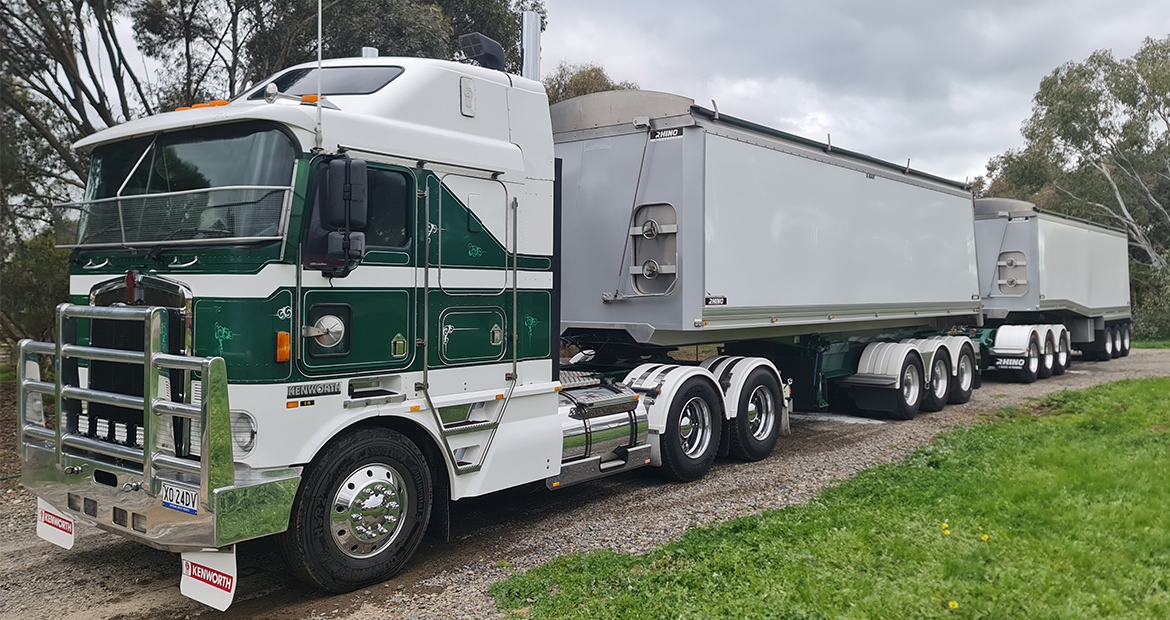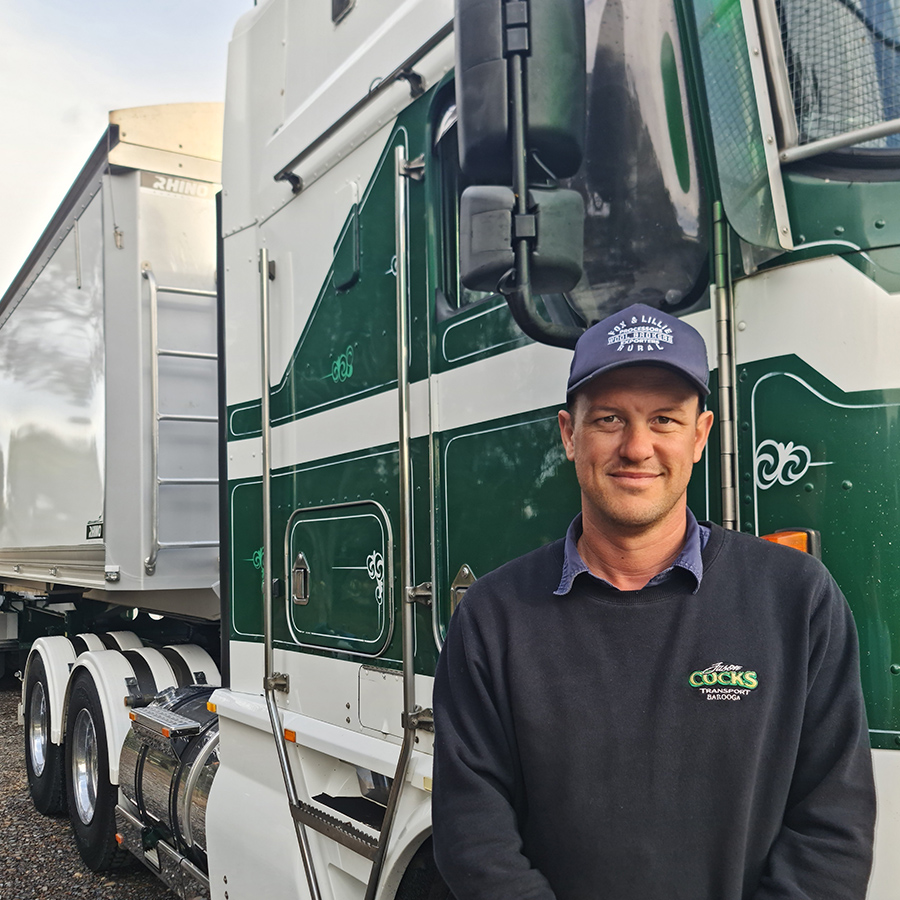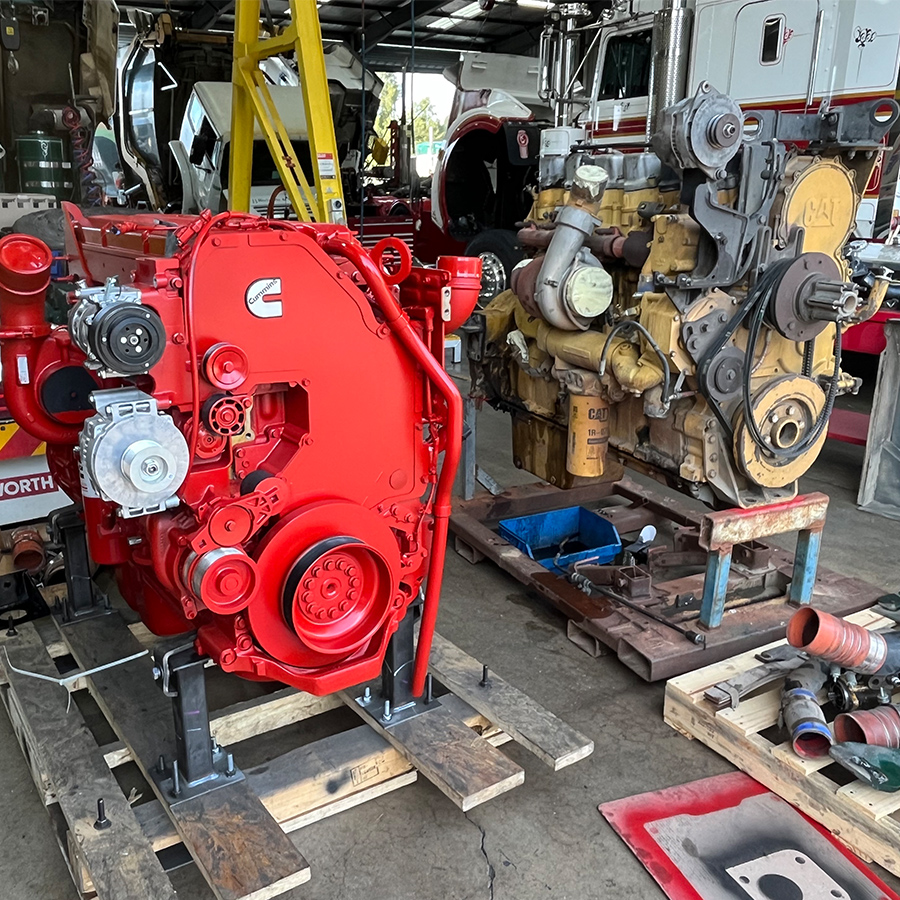The legacy in Jason Cocks’ repower of his 22-year-old Kenworth
There is a lot about legacy in Jason Cocks’ repower of his 22-year-old Kenworth.
By Cummins Inc., Global Power Technology Leader

A change of heart
Before deciding to repower his K104 Kenworth with a Cummins Inc. X15 Euro 3 engine, Jason Cocks weighed up all the economics in what eventually became a clear-cut verdict.
“I looked at every cost aspect, including rebuilding the C15 which was the original engine in the truck,” he says. “But in the end there were several factors strongly in favour of Cummins.
“The projected improvement in fuel economy was important, as was the fact I could repower with a brand new Euro 3 engine,” he says. “I’ve calculated it will pay for itself within two years.”
Operating as Jason Cocks Transport, he also knew he could count on the well-credentialed service support provided by the Cummins Wodonga (Vic) branch which carried out the repower.

Popular for repower
The X15 Euro 3 engine is becoming a popular repower option.
It shares the same base engine hardware as the X15 Euro 6 powerhouse but without SCR aftertreatment; it can only be installed in pre-2008 registered on-highway trucks.
Cocks, 37, was impressed with Cummins Wodonga’s project management and the installation of the X15 rated at 550 hp/1850 lb ft. His K104 does tarped single trailer work as well as tipper B-double and roadtrain double haulage.

“The communication from the branch was great. They kept me up to date on a daily basis,” he states.
The odometer in his 22-year-old Kenworth K104 Aerodyne has now spun up to 2.6 million kilometres. The KW had two previous owners, Wayne Sebire and Neil Lemin, both of whom were known to maintain their equipment well.
Jason admits to being a perfectionist, and his neatly presented K104 is evidence of that. “She’s a neat old banger,” he quips.
Legacy engine
While Cummins’ reputation for industry-leading service support was among the key factors that swung him over to the X15, his experience with legacy Cummins engines also influenced his thinking.
The Gen II Signature 600 was an impressive engine,” he says, recalling driving stints in Western Australia in several Kenworths, hauling fuel and ammonium nitrate in a quad roadtrain combination.
Trucking has long been in the blood of the Cocks family. Jason’s father, Ivan, was a career driver and so it wasn’t surprising that Jason himself would end up piloting trucks – which he has done for 15 years, working for several well-known companies on the east and west coasts, before the lure of starting his own business as an owner-driver took hold.
He has a sound mechanical knowledge, a lot of which he learned from his Dad over the years and which serves him well in maintaining his own truck at his base in Barooga, a border town in the Murray region of NSW.

Fuel economy
The fuel economy improvement with the X15-powered Kenworth is every bit as good as he calculated and he expects it to improve as the engine fully beds in.
“The difference in fuel consumption between the two engines is like chalk and cheese,” he says.
“With my B-double tipper combination running at 68.5 tonnes, I’m looking at 1.8 to 1.9 km/litre with the X15 compared with 1.5 km/litre with the C15.”
He points out the X15 is returning 1.3 to 1.4 km/litre pulling a set of tippers as a roadtrain double at 91 tonnes, while with a tarped single trailer fuel economy is usually around the 2.4 km/litre mark.
Author Profiles

Cummins Inc., Global Power Technology Leader
Cummins Inc., a global power leader, is committed to powering a more prosperous world. Since 1919, we have delivered innovative solutions that move people, goods and economies forward. Our five business segments—Engine, Components, Distribution, Power Systems and Accelera™ by Cummins—offer a broad portfolio, including advanced diesel, alternative fuel, electric and hybrid powertrains; integrated power generation systems; critical components such as aftertreatment, turbochargers, fuel systems, controls, transmissions, axles and brakes; and zero-emissions technologies like battery and electric powertrain systems and electrolyzers. With a global footprint, deep technical expertise and an extensive service network, we deliver dependable, cutting-edge solutions tailored to our customers’ needs, supporting them through the energy transition with our Destination Zero strategy. We create value for customers, investors and employees and strengthen communities through our corporate responsibility global priorities: education, equity and environment. Headquartered in Columbus, Indiana, Cummins employs approximately 70,000 people worldwide and earned $3.9 billion on $34.1 billion in sales in 2024.
Related Topics
Related Tags